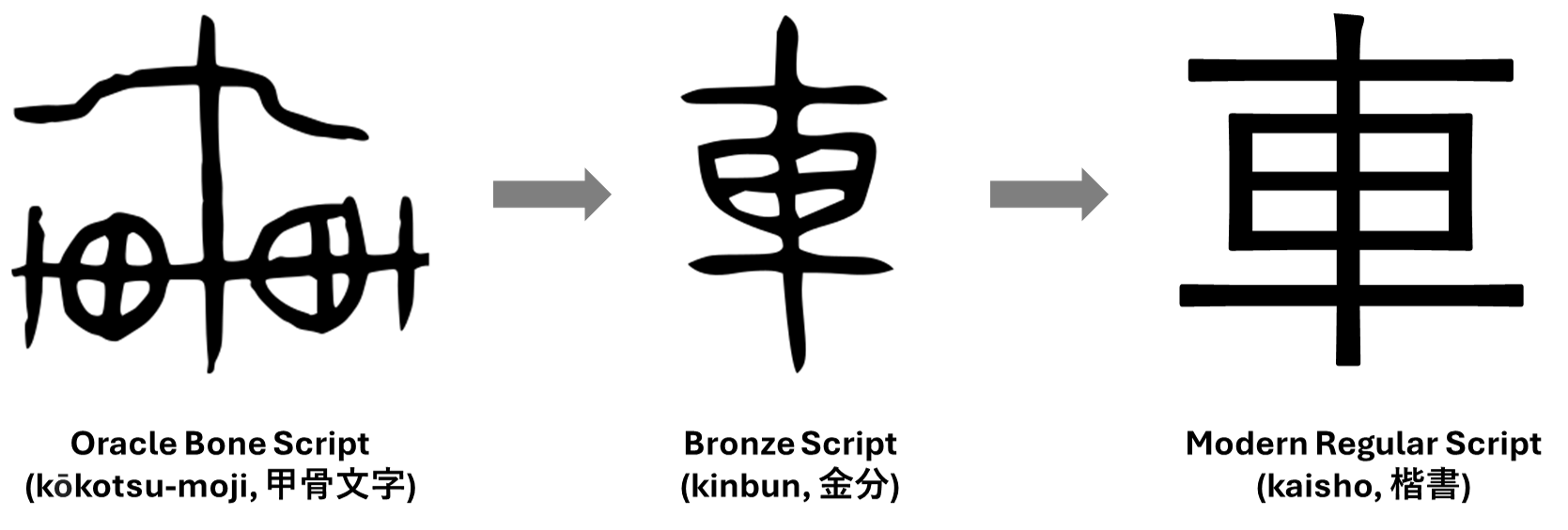What is the Kanjimori Method?
Here at Kanjimori, we understand kanji by breaking them down into their components and tracing the history of the character’s composition over time. An important term we use on this site is “root” – a kanji root is a component that can be traced back to an original irreducible pictogram or ideogram in oracle bone script, the oldest form of Chinese characters. These roots are combined into compound kanji, often to hint either at the character’s meaning or sound.
Evolution of Kuruma (車) Root Over Time

In addition to these roots, we also use the term “corrupted root” to refer to a character that was once a compound kanji but became wonky at some point and lost its links to the past. But don’t be sad! Modern research to reconnect these corrupted roots with their historical forms is ongoing and often succeeds at reminding us of where they came from. Corrupted roots are furthest point back that the modern character form has meaning, so we treat these similarly to true roots.
An important part of our method of study is the use of kanji trees. These can be found in the Kanji Trees tab. Think of kanji trees like family trees for kanji – they tell us about which kanji inherited components from each other. At the top of every kanji tree is a root, either a true root or a corrupted root. In subsequent generations, that root is compounded once, twice, and so on with other roots to produce compound kanji.
When a root or compound kanji is further compounded with other roots, traits of that kanji are often passed down as well, such as related meanings or similar pronunciations. It is especially important to notice when pronunciations are passed down within a kanji tree, as this is an immensely helpful tool for memorizing kanji readings. These “phonetic” relationships are indicated within each kanji tree.
